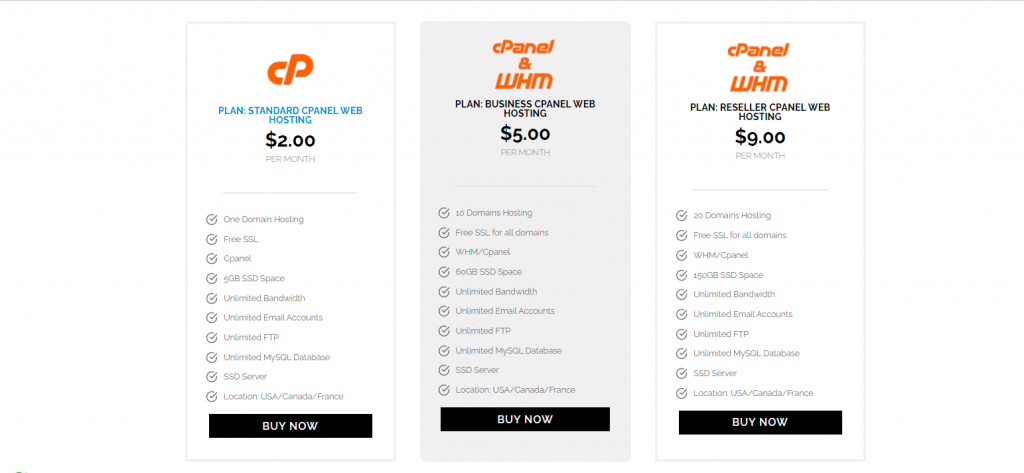
What is cPanel?
cPanel allows you to submit websites, manipulate domains, prepare web files, create e-mail accounts, and more. Cpanel is one of the most popular managed panels in the United States. Many web hosting organizations furnish cPanel to customers as a section of their web hosting package. Cpanel has two interfaces, a user interface called cPanel and a server administration interface known as Web Host Manager (WHM). This mixture permits customers to manage their internet site and resources cPanel web hosting carriers with tools to manage the server.
Is cPanel Free?
cPanel is now not free because it is a third-party application. However, most hosting companies include cPanel in their hosting plans at no more cost. There are some providers who will arrange cPanel free for the first year, and then cost a price on previous years. In 2019, cPanel increased its expenses and many internets web hosting businesses are conclusions convert away from cPanel to other internet site manage panels.
Cpanel Web Hosting Plan

Is cPanel Private?
Yes, your cPanel account is private. If you are a website owner, then be positive to keep your username and password secure. This is important for retaining your website statistics and settings safe.
Best cPanel Host Options
Choosing the great cPanel host to connect the needs of your cPanel Web Hosting website is important. You must be careful to pick a net host based on their reliability, performance, customer support, features, and pricing.

The fine web hosts the use of cPanel is:
Onlive Server is one of the greatest and best-rated web hosting providers that use cPanel. Blue host is nicely respected and one of the oldest internet web hosting companies. They furnish automatic WordPress installs, a free area and SSL certificate, and 24/7 support. Web Hosting officially recommends them as a web hosting provider.
Onlive Server makes use of cPanel and hosts millions of domains. It is one of the most popular net hosting carriers in the industry. Host Gator offers its customers one-click WordPress installs, 99.99% uptime, and around-the-clock support. We consider them to be one of the great web hosting companies for businesses.
How to Install WordPress on cPanel?
We have recorded an entire step-by-step tutorial on installing WordPress the usage of cPanel on the main web hosting organization. This guide will show you how to use 1-click scripts like Fantastic, Quick install, and Miraculous to set up WordPress.
For intermediate WordPress users, we will also give an explanation for how to use FTP to install WordPress. Lastly, for more advanced customers we will exhibit to you how to install cPanel Web Hosting on a nearby computer.
What is Managed Web Hosting?
Managed Web Hosting is a web hosting environment specifically geared up for WordPress websites. cPanel Web Hosting affords higher levels of performance, security, and support.
cPanel Web Hosting sites using managed web hosting load faster, are automatically updated, have daily backups, and have the support of WordPress experts. Managed WordPress hosting costs more due to the fact the hosting provider is managing the internet site environment.
Should You Use a Managed Web Hosting Platform?
If you are trying to choose the best hosting plan or thinking if managed WordPress web hosting is for you, the reply is simple. If you are wondering about starting a blog or you are just a beginner, then you do now not need managed Web hosting. Managed Web hosting is an appropriate choice for small to medium-sized businesses or blogs that already have a very massive wide variety of visitors.
Businesses and popular blogs that have a lot of visitors benefit the most from a managed plan. That is because groups and popular websites ought to center of attention on customer providers and content, so they want a hassle-free excessive performing website.
Where is cPanel in Managed Web Hosting?
You will no longer find cPanel on a managed Web Hosting account, due to the actuality the web host takes care of indifferent website web hosting tasks. Managed cPanel WebHosting consists of installing WordPress, coping with server-level caching, growing backups of your website, and managing WordPress core updates. Managed to host businesses like WP Engine and Liquid Web use their personal control panels as an alternative to the proprietary cPanel. Many net host providers are switching away from cPanel and are replacing it with a personalized user interface to decrease fees and provide a more built-in customer experience.
Why Do I Need cPanel Hosting and What Can I Do in cPanel?
Key Features and Modules
Upload files to your server
You can upload files at once to your server through a web-based application. You can use these files to make edits and adjustments to your website easily. In addition, you can trade privateness settings for documents as well as make backups of necessary material
Watch the Video – cPanel alternative: CentOS Web Panel #CWP for Web Hosting in 2021
Set up preferences
There’s an impressive quantity of customization options by the preferences setup module. For instance, you can change your desired language, swap out different styles, and amend your contact information so your facts host knows how to get in touch.
Create databases
Any web page that uses a content administration system (CMS), like WordPress, will need databases. This is the place all your posts, data, and content will be stored. In many cases, these are created automatically, however you can create customized databases any time you’d like and set up a new location to store statistics and data
Install web applications
The cPanel hosting interface allows you to without difficulty install web purposes and add-ons for your CMS. Most can be completed in just one click on and offer some useful functionality for your site, like free buying carts for your eCommerce store and website themes.
Change safety settings
You’ll discover a wealth of security alternatives in your dashboard. You can set the encryption level on your emails, manage your user’s passwords, install firewalls, allow brute pressure protection, and deploy additional security plug-ins.
